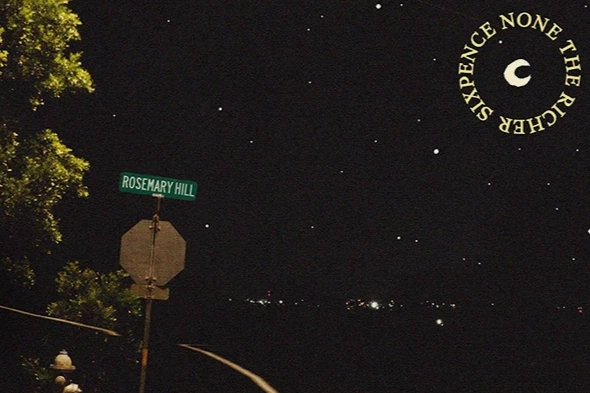Disclaimer: What follows are specific plot details of “Gone Girl.” The review contains spoilers regarding the movie. Do not read this review if you have not watched the movie yet, and wish to in the future.
“I think it’s your chin, It’s quite villainous,” Amy Elliot (Rosamund Pike) said to Nick Dunne (Ben Affleck) after meeting him for the first time at a house party in NYC. Who would know that this moment would leave a sense of irony in the audiences, as Dunne all-too-soon becomes the villain.
In this crime-thriller-mystery film based on the book written by Gillian Flynn, Gone Girl utilizes techniques rarely used, but super effective, like soft focuses, fade-outs and shot-reverse-shots, in which every detail is highly intimate–and then a black screen fades the shot.
Some may say the token mystery techniques are cinematographer, Jeff Cronenweth’s signature, whom also filmed The Girl with the Dragon Tattoo. In both films he plays with low-key and fluorescent lighting, depending on the situation–surreal to real.
A lot of character development happens in this movie, and just like with Dragon Tattoo, director David Fincher had a method to his madness, picking actors he thought would best “hang into each character,” like he reveals in an interview for Dragon Tattoo seen below.
Gillian Flynn not only wrote the book, she wrote the screenplay, as well. Stylistic choices from the book can still be seen throughout the movie, with details in the corner such as “July 5th. The morning of,” and “July 6th. One day gone.” The film maintains Elliot’s narration in certain scenes, too. Usually during her narration, the audience watches her quirky hand-writing in her journal.
What makes the movie go up from an eight point five to a nine point five, however, is the use of sound. Trent Reznor and Atticus Ross were the main people in charge of music and just like Cronenworth and Fincher, they contributed their styles to Dragon Tattoo. Now, they play with non diegetic sound, muting outside voices and amplifying Elliot’s during her narration of various scenes. They also continuously use repetition of music depending on the scene. One song in particular Reznor and Ross use is an entrancing, hypnotizing one whenever Dunne and Elliot are together.
I could go on and on about the little details that make Gone Girl as a film work out, but I should also appraise the actors. Affleck’s shy demeanor, yet brazen attitude was just right for the movie; Tanner Bolt (Tyler Perry), Dunne’s defense attorney, brought some much-needed comic relief. But the real star of the show was Rosamund Pike and her many subtle facial expressions. That amount of emotion takes dedication and she is such a fantastic actress for it.
Even though I have never heard of Rosamund Pike before I watched the movie, now I’m an avid fan. If you want to see a complex mystery thriller, mangled with twists and rich dedication and detail, I recommend watching Gone Girl. It may be one of the best films I’ve seen in a long time!
Parkway West Pathfinder gives “Gone Girl” a 9.5/10.



![There are more than 20 open cardio machines at Crunch Fitness. I enjoyed the spacious environment at Crunch, a sentiment that was shared by sophomore Sanjana Daggubati. “[Going to] Crunch Fitness was the right decision because [it] feels more professional. Crunch’s workers are laid back, but not to the point where they don't care,” Daggubati said.](https://pwestpathfinder.com/wp-content/uploads/2025/09/IMG_5242-1-1200x900.jpg)

![Various empty Kit Kat wrappers crowd the desk, surrounded by scoring sheets. While production of Kit Kat flavors in the U.S. is limited, Nestlé, the owner of Kit Kat, manufactures hundreds of unique flavors in Japan, including the flavors ocean salt and passion fruit. “I thought there [were] some interesting flavors, and a lot of them were really unexpected,” senior Elle Levesque said.](https://pwestpathfinder.com/wp-content/uploads/2025/09/image-2.png)


![Pantone’s selection of the 2025 Color of the Year is revealed: Mocha Mousse. Ceramics teacher Ashley Drissell enjoys this year’s selection. “Maybe it’s the name but [Mocha Mousse] reminds me of chocolate and coffee. It makes me hungry. It’s very rich and decadent,” Drissell said.](https://pwestpathfinder.com/wp-content/uploads/2025/02/DSC_0015-1200x800.jpg)



![Focused on providing exceptional service, sophomore Darsh Mahapatra carefully cleans the door of a customer’s car. Mahapatra has always believed his customers deserve nothing less than the best. “[If] they’re trusting us with their car and our service, then I am convinced that they deserve our 100 percent effort and beyond,” Mahapatra said.](https://pwestpathfinder.com/wp-content/uploads/2025/10/DSC_0018-1200x800.jpg)
![Sophomore Aleix Pi de Cabanyes Navarro (left) finishes up a soccer game while junior Ava Muench (right) warms up for cross country practice. The two came to Parkway West High School as exchange students for the 2025-2026 school year. “The goal for the [exchange] program is to provide opportunities for both Parkway students and our international exchange students to learn about other cultures, build connections and become confident, capable, curious and caring — Parkway’s Four C’s — in the process,” Exchange Program Lead Lauren Farrelly said.](https://pwestpathfinder.com/wp-content/uploads/2025/10/Feature-Photo-1200x800.png)
![Leaning on the podium, superintendent Melissa Schneider speaks to Parkway journalism students during a press conference. Schneider joined Parkway in July after working in the Thompson School District in Colorado. “My plan [to bond with students] is to get things on my calendar as much as possible. For example, being in [classes] is very special to me. I am trying to be opportunistic [meeting] kids [and] being in [the school] buildings. I have all the sports schedules and the fine arts schedules on my calendar, so that when I'm available, I can get to them,” Schneider said.](https://pwestpathfinder.com/wp-content/uploads/2025/09/IMG_5425-1200x943.jpeg)
![Gazing across the stage, sophomore Alexis Monteleone performs in the school theater. The Monteleone family’s band “Monte and the Machine” has been releasing music since 2012, but Alexis started her own solo career in 2024 with the release of her first single, Crying Skies. “My whole family is very musical, [and I especially] love writing [songs with them],” Monteleone said.](https://pwestpathfinder.com/wp-content/uploads/2025/09/DSC7463-1200x798.jpg)

![Leaping through the air, senior Tyler Watts celebrates his first goal of the season, which put the Longhorns up 1-0 against the Lafayette Lancers. Watts decided to play soccer for West for his last year of high school and secured a spot on the varsity roster. “[Playing soccer for West] is something I had always dreamed of, but hadn’t really had a good opportunity to do until now. It’s [really] fun being out [on the field], and I’m glad I decided to join the team. It’s just all about having fun with the boys and enjoying what time we have left together,” Watts said.](https://pwestpathfinder.com/wp-content/uploads/2025/09/DSC_1951-1200x855.jpg)

![Junior Fiona Dye lifts weights in Strength and Conditioning. Now that the Trump administration has instituted policies such as AI deregulation, tariffs and university funding freezes, women may have to work twice as hard to get half as far. "[Trump] wants America to be more divided; he wants to inspire hatred in people,” feminist club member and junior Clara Lazarini said.](https://pwestpathfinder.com/wp-content/uploads/2025/05/Flag.png)
![As the Trump administration cracks down on immigration, it scapegoats many immigrants for the United States’ plights, precipitating a possible genocide. Sophomore Annabella Whiteley moved from the United Kingdom when she was eight. “It’s pretty scary because I’m on a visa. When my visa expires next year, I’m not sure what’s going to happen, especially with [immigration] policies up in the air, so it is a concern for my family,” Whiteley said.](https://pwestpathfinder.com/wp-content/uploads/2025/05/DSC_0077-7copy.jpg)
![Shifting global trade, President Donald Trump’s tariffs are raising concerns about economic stability for the U.S. and other countries alike. “[The tariffs are] going to pose a distinct challenge to the U.S. economy and a challenge to the global economy on the whole because it's going to greatly upset who trades with who and where resources and products are going to come from,” social studies teacher Melvin Trotier said.](https://pwestpathfinder.com/wp-content/uploads/2025/05/MDB_3456-1200x800.jpg)
